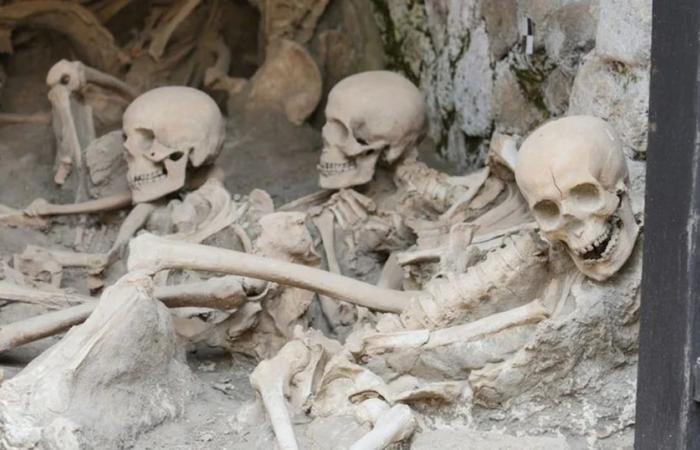
It was late at night when the eruption of Mount Vesuvius nearly 2,000 years ago spewed volcanic material onto the beach of the ancient city of Herculaneum, where hundreds of men, women and children, and even a soldier, crowded in and around houseboats. of stone, waiting for the rescuers who would never arrive.
The volcanic eruption of the year 79 AD. C. buried the coast and left the beach off-limits to visitors, until now, when recently completed restoration works allow visitors to set foot on the beach, as it was before the disaster, for the first time.
The restoration of the beach allows people to see the site “from the same position” as “the ancient Roman town,” Francesco Sirano, director of the Herculaneum archaeological park, said in an interview Thursday. “Visitors have to go down through a tunnel… and it’s like going back two thousand years, and suddenly you have the beach”.
While Herculaneum is often overshadowed by its more famous neighbor, Pompeii, it was also destroyed by Mount Vesuvius, and the beach area is known for house the remains of at least 330 people who died there, taking refuge in the floating houses in the hope of being rescued. Those remains, discovered in the 1980s, 1990s and 2000s, were mostly women, children and babies, along with their dogs and sheep, while adults and young men were thought to have died on the beach itself, according to researchers. .
Sirano said that The eruption had covered Herculaneum with “an enormous amount of volcanic materials”. The beach area eventually flooded, meaning visitors could only access the boathouses and wreckage by traveling along “a suspended path” above the water.
Now, thanks to restoration work carried out by the Italian Ministry of Culture and the Packard Institute for the Humanities, visitors to the site will be able to set foot on the beach again for the first time, he added. The beach was open to the public on Wednesday.
The old beach had a characteristic black volcanic sand, but local authorities decided not to use it in the reconstruction, as the sand would cause accessibility problems for wheelchair users, Sirano said. Instead, they used a similarly colored dark material to recreate the scene as it would have appeared to the former residents.
“If we look toward where the sea once was, we become modern explorers of the immense blanket of volcanic flow that covered the city in a few hours, almost sharing the feeling of total annihilation” that ancient Roman residents would have felt, Sirano said in a press release from the Italian Ministry of Culture, which describes the beach as “an extraordinary and unique place in the world.”
The 330 people whose remains were found at the site are believed to have made up five percent of the ancient city’s population, Sirano said, adding that organic materials such as wood and food had been discovered at the site.
Pompeii, about eight miles to the south, was largely buried by volcanic ash. According to UNESCO, they were the only ruins of Roman cities “preserved in such an exceptional manner and have no parallels in integrity and extent in the world.”
Both sites “have been progressively excavated and made accessible to the public since the mid-18th century,” the organization said, although much of the Herculaneum remains lie beneath the current city and have only been explored through 16th-century tunnels. XVIII.
The eruption may have wiped out life in the two ancient cities, but new finds from the area continue to fascinate researchers and visitors alike.
Earlier this year, archaeologists announced the discovery of a banquet hall in Pompeiiwhich was decorated with beautiful frescoes of mythological characters inspired by the Trojan War.
In 2021, archaeologists discovered the remains of a man between 40 and 45 years old who was found with his belongings and nicknamed the “last fugitive from Herculaneum”.
A year earlier, Italian researchers said the heat from the eruption was so intense that turned a victim’s brain into glasswho died alone, as The Washington Post previously reported.
Technology has also played a role in bringing the forgotten world back to life: Last year, a University of Nebraska-Lincoln student was awarded $40,000 after he developed an artificial intelligence program that was able to decipher parts of an ancient scroll. which was burned and buried in the eruption.
(c) The Washington Post





